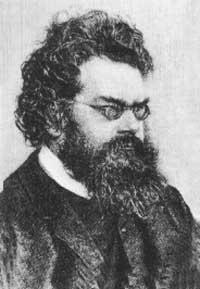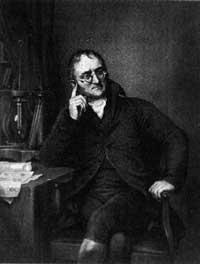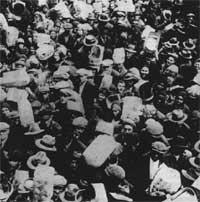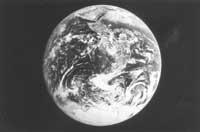Ludwig Boltzmann
1993/11/01 Azkune Mendia, Iñaki - Elhuyar Fundazioa Iturria: Elhuyar aldizkaria
This Austrian physicist entered Vienna on 20 February 1844. After his studies he obtained a doctorate degree from the University of Vienna in 1866. He taught mathematics and physics at Graz (1869), Munich (1895), Vienna (1895) and Leipzig.
Boltzmann is the main creator of the kinetic theory of gases. Based on the works of Clausius and Maxwell, in 1872 he defined the characteristic function H of a gas introduced in a container. This function could only be reduced and, except in the sign, it was similar to that of entropy.
However, Boltzmann's main contribution was to introduce the concept of probability in macroscopic gas states. The probability was to measure the number of microscopic “complexes” associated with each gas state. In 1876 she obtained a formula on the entropy of gas, but was attacked by scientists Loschmidt and Zaramelo. In fact, the mechanical processes with which Boltzmann expressed entropy were reversible and, according to the second principle of thermodynamics, entropy can only grow.

Following these discussions, Boltzmann made a new statement showing that the reversibility of macroscopic processes was not possible. However, their probability of being reversible was low, so in practice they were considered “irreversible”. In other words, Boltzmann statistically interpreted the second law of thermodynamics.
On the kinetic theory of gases, Boltzmann did his work without news from Maxwell. Therefore, it can be said that both have the same merit in this matter.
Boltzmann proposed atomic theory at a time when Ostwald opposed and was not very successful among scientists. However, his theories on statistical mechanics allowed Planck to find the many in 1900 and Einstein the photons in 1905.
The constant k, known by its name, is famous in Boltzmann's statistical formulations. (k = R/N). It is the ratio between the constant of the perfect gases and the number of Avogadro. In International System,
k = 1,38062 x 10-23 J K-1
is.
Based on Stefan's tests, Boltzmann showed that the amount of radiation increased proportionally to the fourth round of absolute temperature, so it is called the Stefan-Boltzmann law.
At the end of his life he suffered depressions and died suicidal on 5 September 1906 in the village of Dunio, in Trieste (although currently dependent on the Italian administration, then he was part of Austria).

Gai honi buruzko eduki gehiago
Elhuyarrek garatutako teknologia






